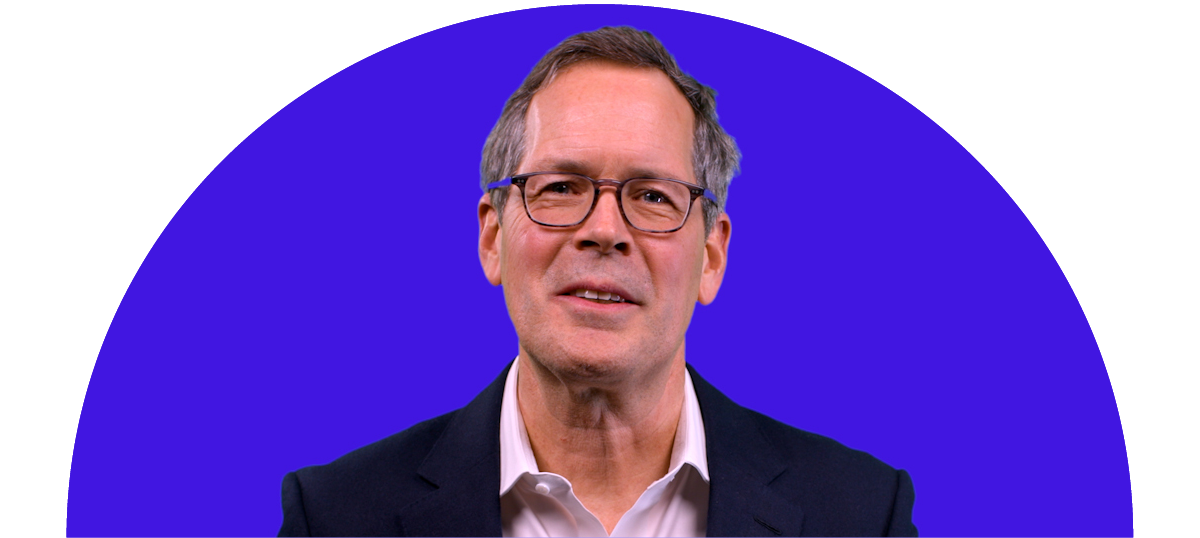Fixed Income Generator: Municipals in 2024
Join George Bory, CFA, and Nicholos Venditti, CFA, as they share thoughts on the current market environment and what to expect in 2024.

Key takeaways
- The macro backdrop has gotten much more bond friendly over the past 12 to 18 months and that tailwind should help bond investors.
- Higher yields allow bond investors to let bonds do what they're supposed to do, which is to generate steady, predictable cash flows in income.
- Looking ahead, investors should consider diversifying duration exposures, having flexibility within their portfolios, and being disciplined and purposeful with risk allocation.
Podcast transcript
George Bory: I’m George Bory, chief investment strategist of Fixed Income here at Allspring Global Investments, and you’re listening to On The Trading Desk®. Today, we have a special episode discussing the current state of fixed income markets and where we see opportunities ahead in 2024. Joining me today is Nick Venditti, head of Municipal Fixed Income at Allspring. Nick, glad to have you on the call.
Nick Venditti: Thank you so much, George. Good to be here.
George: Nick, as you know, bonds were back in 2023 and it was a pretty eventful year for all fixed income investors. The Fed (Federal Reserve) raised rates by 100 basis points in the first half of the year. We went through a banking crisis really right at the end of the first quarter, beginning of the second quarter. Economic growth surged in the second half of the year. The rate of inflation cooled throughout the year while folks pretty much stayed pretty gainfully employed throughout the year. The economy was pretty good. And with this backdrop, I guess the question is, were you surprised to see that the 10-year started the year right around 3.9% and finished the year at almost exactly the same level but during the year, traded pretty much at about a 175-basis-point range? And despite all of that volatility, bond performance was pretty good. Aggregate investment-grade portfolios generated about 5.5%. High yield was up 13.5%. Munis themselves, your asset class, up 6.5% and that’s pretax adjusted. If we gross it up, it’s closer to 10%. So, generally, not a terribly bad year for bonds. What are you guys thinking as we go into 2024?
Nick: Yeah, it was a wild ride for sure in 2023, but ultimately, it ended up pretty strong for fixed income investors. I think we are likely to see a little bit of a repeat in 2024, both as it relates to the wild ride aspect and as it relates to fixed income performance. Look, the reality is that although the economy has held up pretty well throughout most of 2023 and into the early days of 2024, there are, at least in my mind, some material signs that it’s slowing. And the idea of a soft landing or no landing is harder and harder for me to swallow, which leads me to think recession and, generally, fixed income performs pretty well in a recession. But I don’t think it’s going to be quite that simple, just like it wasn’t quite that simple in 2023. I think investors are likely in for a wild ride as some of that economic data becomes clearer, as the Fed and their ultimate actions become clearer, and we see some of the volatility that has really avoided the equity market probably make its way into the equity market as we march through this year. What do you see, George? I mean, what are your thoughts on recession and the macroeconomic backdrop?
George: Yeah, well, as you know, you were part of this, but, late last year, we put out our 2024 investment outlook. It’s titled Pushing On: Navigating Opportunities in Fixed Income and Beyond—a riveting title, as you know. And we emphasize, though, three specific themes for this year and they’re intended to be broad and it really cuts to the heart of what you just mentioned. It’s the wild ride. And, so, bond investors should do really, we think, three things. One, first and foremost, is just diversify your duration. The macro backdrop has gotten much more bond friendly over the last 12 to 18 months and that tailwind should help bond investors. So, be willing to diversify your duration across the curve. The second is flexibility. I mean, you’re a bond manager, an active bond manager. You know the importance of just being able to maneuver, to pivot, to be able to respond. And so having that flexibility in your portfolio is absolutely critical. We don’t think this is just a set-it-and-forget-it type of environment. And then, the third, because there’s such significant macro crosscurrents all around us, is that you really need to be very, very disciplined with and purposeful with your risk allocation. It’s really important that risk management is a strong overarching theme in the portfolio because, as you know, you can get caught offsides with unintended bets in a portfolio. And, so, it’s really those three things. It’s diversify your duration, it’s maintain your flexibility, and be very purposeful with that risk budget so that you can capture those tailwinds all during the time where you have to be very, very focused on security selection. Because as you point out, our central view for this year is it’s a choppy ride. Growth decelerates. Inflation comes down. Those two things should help bond investors, but it’s not just easy sailing. And, so, it’s really those kind of basic principles that we think investors really, really need to focus on. Now, when you think about munis specifically, how do you define your risk budget for this year as we’re starting out 2024?
Nick: Yeah, look, ultimately, it aligns very closely to what you’re saying. I think having the flexibility to take risk when you’re getting paid to take risk is going to be incredibly valuable to investors on a go-forward basis. And what does that mean for us and munis? Well, there are a bunch of levers that we can pull to take risk, but really they boil down to two big things. There’s one on the duration side and there’s one on the credit side. And if we start with duration, to dovetail off your comments about having a duration allocation that’s correct for your individual investment goals, I think that makes a lot of sense. Look, we know intimately that the money market trade was hot in 2023. By the end of the year, by the end of 2023, if you had invested in fixed income securities, you would have outperformed your money market. That’s likely going to happen again. And, so, it is time for investors to get on the curve. It’s time for them to get on the curve in the right spots. As we all know, the yield curve is wonky shaped, for lack of a better descriptor. And what that means is that there are opportunities for investors to play the right parts of the curve, to not just take duration, but to take duration in the right spots. I think doing that from a risk-budgeting perspective is going to allow outsized total returns. Again, being active, making those bets where they make sense to make those bets is going to be a big deal. How do you feel about that in not just the muni market, but the taxable market more broadly?
George: Yeah, it’s the same levers, so it doesn’t matter if you’re a muni investor or a taxable bond investor or a global investor, for that matter. It’s duration and credit. And when we look across the markets, we do see good opportunities to take duration. But you talk about, effectively, this Goldilocks moment in time where the Fed is signaling a softer or an easier approach to policy. That tends to be a really strong tailwind for bond investors, but the curve doesn’t always behave uniformly. So, we see an environment where yields could come down this year, but it’s really going to be led by the front end. So, we would want to preserve or harbor as much duration in that short to intermediate part of the curve to capture that and be very judicious on that long end duration because inflation’s not dead yet. It’s coming down, but it’s still elevated. Secondly, credit spreads, as you pointed out earlier, have come a long way, certainly in the fourth quarter of last year. So, we would look at, say, typical investment-grade or even high yield spreads as being really priced for perfection right now. Now, that means you need to be very careful with the bonds you pick. It doesn’t mean we’re careening into the end, but it does mean you have to be very, very selective with the bonds that you put in the portfolio. And when we look at other parts of fixed income, like the structured products part of the market, we like structured cash flows, very predictable cash flows. Cyclically, we’re in a great spot economically, but like you said, there are good signs to suggest that’s decelerating, so the predictability of those cash flows goes up. So, when we think about it, I like to say in simple terms, if you think of a three-lane highway, we’re in the center lane right now. We’re not in the fast lane, we’re not in the slow lane, we’re in the center lane. So, we want to have some duration. We want to have some credit spreads. We’re willing to take some high yield. We’re even willing to dabble a little bit in emerging markets. But none of these positions are significant. They’re actually quite small when we look at them. But, in totality, that’s extra income, it’s extra yield, and a big, big strong focus on security selection to try to extract as much value out of this market as possible. So, the macro is there, but you need to be very nimble and very purposeful in positioning. So, why don’t we just change gears quickly? I mean, these are sort of the upsides. What about risks? What do you guys see as the risks for this year?
Nick: Yeah, look, I like the analogy you used a lot about the three-lane highway. I mean, ultimately, if you look back at pre-2022, you could argue—I wouldn’t argue, but you could argue—that being a fixed income investor wasn’t that hard. If you just bought the longest, ugliest piece of paper, you tended to win. And that’s probably not going to happen this year because although the macroeconomic backdrop doesn’t look terrible, you do have things like credit spreads that are priced for perfection. So, I do think that investors in the fixed income markets need to be aware of two things. Number one is that in a slowing macroeconomic backdrop, we are likely going to see credit spreads widen somewhat. I don’t think it’s going to be Armageddon, but I do think it will probably happen. And by virtue of that, you should be mindful of the credit risk you are taking. Again, to your point, you don’t have to avoid credit. You don’t have to throw it away and not look at it. But I do think selection, buying the right bonds, the right credit at the right price at the right time is going to mean a lot. And then, second is that duration piece. I do think that investors sometimes simplify things too much. They believe that when rates get cut, the yield curve is going to fall uniformly. As you mentioned, that almost certainly is not going to happen. And by virtue of the fact that that is not going to happen, it does, I think, guide our hands as we think about curve allocation and, ultimately, duration positioning. Look, I’m in favor of adding some duration to your portfolios because duration is a risk. It’s a risk that got cheaper, and when risk gets cheaper, you should take more of it, full stop. But it doesn’t mean you should take all of it. You should be cognizant that the 20- to 30-year part of the curve in Treasuries is heavily inverted. And what that means for us practically, what it means for us in the muni market practically, is that every day we can go out and buy a 20-year bond that yields 95% as much as a 30-year bond but only has 80% of the risk. That’s a good trade. Those are the types of trades people should be looking to make as they attack this market in 2024.
George: Well, I think, just to wrap it up, I really do appreciate your comments and I think we’re very much on the same page. But it does seem like the bond markets are still in this renormalization period after 15 years of the zero-interest-rate policy experiment—the reversal of that started last year, and we’re midway through. This is going to take a couple of years to ultimately settle out and find that new equilibrium. But fortunately, I think, as you mentioned, higher yields basically allow bond investors to let bonds do what they’re supposed to do, which is really just generate steady, predictable cash flows in income that investors can use over a multi-year period. And at the start of 2024, I think we could hopefully both agree that we should be optimistic about that, that bonds can do what they’re supposed to do, investors can ride the yield curve, and good credit selection, good security selection, good bond selection can help you build very, very robust portfolios in this kind of environment. So, I think there are good reasons to be optimistic for bonds this year and the macro backdrop is supportive. So, I don’t know if you have any other final thoughts or we could wrap it up.
Nick: Yeah, absolutely. Look, I’ll just add real quickly to that that as a fixed income investor, I generally like to think of things in worst-case scenarios. And I think if you look at the fixed income asset class broadly as a worst-case scenario, worst-case scenario is that you don’t get any price appreciation in 2024, but you’re still getting a lot of income. In fact, in many products, you are getting income levels that are commensurate with equity-like returns but with fixed-income-like risk. So, with best case, you get the income and some price appreciation. Worst case, you’re clipping higher coupons than you have, frankly, in decades, and that looks pretty attractive to me.
George: Nick, thanks very much for joining the show today. It’s really great to catch up with you and hear your thoughts.
Nick: Thank you so much for having me, George. It’s been a lot of fun.
George: So, that wraps up our conversation today. And for our audience, thank you for joining us here On The Trading Desk®.
Announcer: Visit allspringglobal.com to receive more market insights and investment perspectives from Allspring Global Investments. To hear the latest from our thought leaders on the ever-changing investment landscape, you can subscribe to the program on Apple Podcasts, Spotify, or wherever you get your podcasts. Thank you for listening and joining us on the road to investing elevated.
Related insights

Two of Allspring’s senior portfolio managers and high yield specialists, Chris Lee and Mike Schueller, sit down with Daniel Sarnowski to discuss recent volatility and why focusing on shorter-duration, higher-quality high yield assets could be the answer in uncertain markets.

Nick Venditti, Allspring’s head of Municipal Fixed Income, explains the impact of the recently passed One, Big, Beautiful Bill on our SpringTalk Muni Moments. And the good news for muni investors? It’s not bad news.

After a mid-April “tariff tantrum,” bond markets appear to be moving past trade headlines and turning their attention to upcoming tax policy and budget negotiations.

George Bory, chief investment strategist for Allspring Fixed Income, explains how active investing in fixed income can offer key advantages over passive investing by prioritizing investor needs, accounting for opportunity costs, and exploiting structural inefficiencies within the bond market.

Nick Venditti, head of Municipal Fixed Income, delves into the recent volatility in the fixed income markets in this episode of Allspring Muni Moments. With elevated yields and favorable muni-to-Treasury ratios, Nick highlights why now might be the time to explore municipal fixed income investments.

The market volatility following “Liberation Day” drove municipal yields to levels not seen since the Global Financial Crisis, presenting real opportunities for investors.

Bond markets are adjusting to tariff impacts amid economic uncertainty. Fixed income investments can help protect against downturns. Expect further yield curve steepening and sector rotation. Use “Riding the Curve” solutions to help maximize income and diversify duration.

Nick Venditti, head of Municipal Fixed Income at Allspring Global Investments, talks about how, for the first time in a while, the higher education sector is starting to show signs of distress.

Allspring fixed income experts George Bory and Nick Venditti recap an eventful start to the year. Trump took office again, wildfires raged in California, and the backdrop was set for a potentially volatile rest of the year. In this episode, find out what all that means for munis in 2025.

Allspring's Plus Fixed Income team explains the three key elements they believe may lead to a more balanced and enhanced return profile.

Allspring's Plus Fixed Income team explains why they believe now is the time to utilise an unconstrained multi-sector approach to uncover opportunities in global fixed income.

Insight
Bonds Be Nimble, Bonds Be QuickTwo of Allspring’s fixed income teams provide examples of how they have exploited pricing inefficiencies through thorough credit research and careful portfolio management.